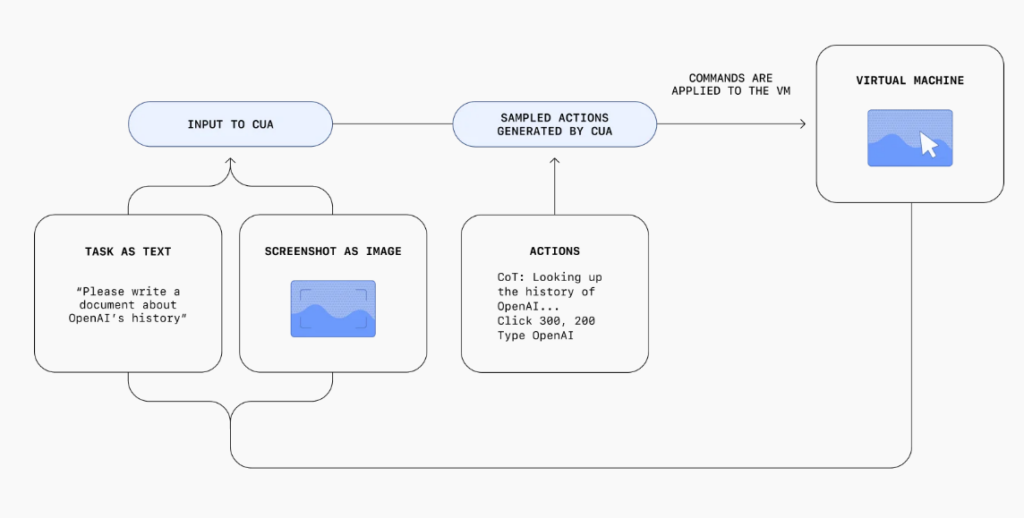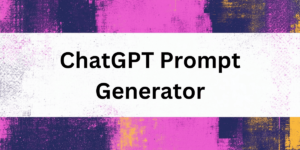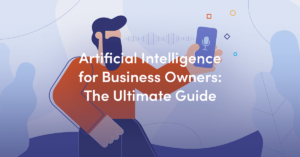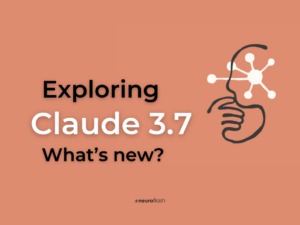In the rapidly evolving world of artificial intelligence, OpenAI continues to push boundaries with innovative tools designed to transform our daily digital interactions. One of its latest breakthroughs, Operator, is a research preview of an AI agent that can autonomously perform web-based tasks. In this post, we’ll dive deep into what Operator is, how it works, how you can access it, the tasks it can perform, its pricing, and what users are saying about its value.
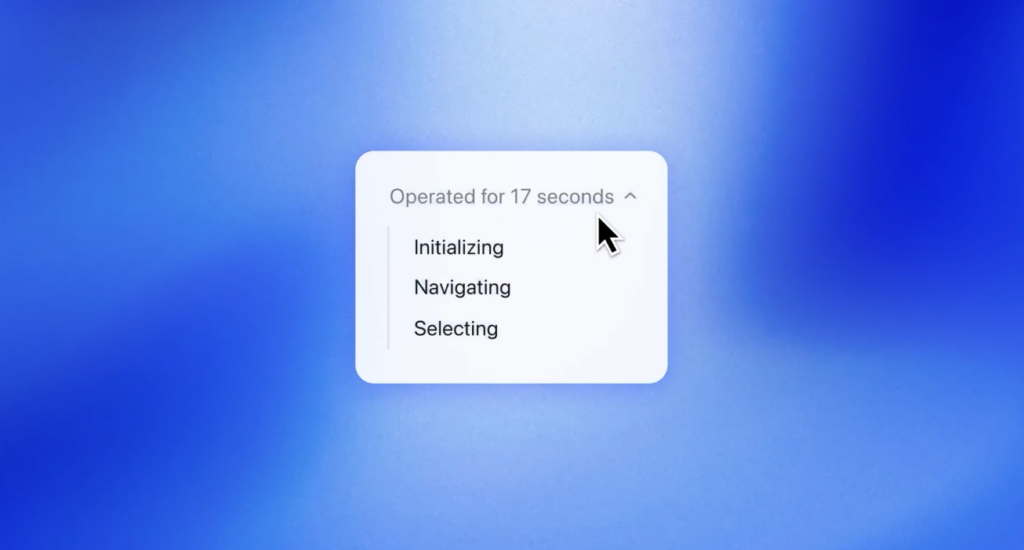
The OpenAI AI Agent: Operator
OpenAI has officially introduced its AI agent, Operator, a powerful system designed to analyze on-screen content and autonomously perform actions within a web browser based on user instructions. This innovation allows Operator to interact with web pages much like a human would—clicking buttons, filling out forms, scrolling, and navigating through online interfaces to complete tasks efficiently.
While this concept isn’t entirely new—Anthropic’s ‘Computer Use’ and DeepMind’s Mariner have previously explored similar AI-driven web automation—OpenAI’s approach comes with its own unique advantages. Under the leadership of Sam Altman, OpenAI has integrated advanced vision and reasoning capabilities, leveraging GPT-4o‘s ability to process visual data and intelligently interact with digital environments. This combination sets Operator apart, making it one of the most promising AI-powered automation tools to date. But, how does it actually works?
What Is OpenAI Operator?
OpenAI Operator is an AI-powered agent built to navigate and interact with web browsers much like a human user. Leveraging advanced models and computer vision, Operator can:
- Simulate Human Interactions: It can click buttons, fill out forms, scroll through pages, and type text—mimicking the actions a human would take.
- Automate Repetitive Tasks: Whether it’s booking a restaurant reservation, ordering groceries, or filing expense reports, Operator is designed to streamline everyday online tasks.
- Learn and Improve: As a research preview, it’s continuously refined based on user feedback, ensuring that its capabilities evolve over time.
Powered by OpenAI’s Computer-Using Agent (CUA) model—an extension of GPT-4o’s vision and reasoning capabilities—Operator “sees” web pages via screenshots and interacts dynamically with them.

How Does Operator Work?
Computer-Using Agent (CUA): The Technology Behind Operator
Operator is powered by a model called the Computer-Using Agent (CUA), which is built on GPT-4o. This advanced system allows Operator to interpret screenshots and interact with websites using standard browser controls, such as a cursor and a virtual mouse.
How CUA Works
As detailed in OpenAI’s documentation, CUA processes raw pixel data from the screenshots it captures and uses a virtual keyboard and mouse to execute actions. Once a screenshot is taken, the model analyzes the visual content, reasons through the next steps, and follows a logical sequence of actions based on past interactions. This enables Operator to adapt dynamically, ensuring that it can complete complex tasks by continuously learning from the evolving web environment.
Here’s a breakdown of its key mechanisms:
1. Computer-Using Agent (CUA): At the heart of Operator is the CUA model, built on GPT-4o. This model is trained to “see” and interact with the web like a human. It combines vision capabilities to understand website layouts with advanced reasoning to decide what actions to take.
2. Visual Navigation & Interaction:
- Screenshot Capture: Operator takes screenshots of web pages, allowing it to “see” the website’s interface.
- Interface Element Identification: It analyzes these screenshots to identify and understand different elements on the page, such as buttons, menus, text fields, and images.
- Simulated Human Actions: Operator then interacts with these elements using simulated mouse clicks, scrolling, and typing, mimicking how a human user would navigate and use the website.
3. Contextual Reasoning:
- Task Understanding: The CUA model enables Operator to understand the context of a task. For example, if you ask it to “book a flight,” it understands what that entails and can break it down into sub-tasks.
- Challenge Handling: Operator can recognize challenges like CAPTCHAs or situations where sensitive information is required. In these cases, it pauses and prompts you for input, ensuring you remain in control.
4. User Control:
- “Takeover Mode”: For critical actions, such as entering login credentials or payment details, Operator employs a “takeover mode.” This hands control back to you, allowing you to securely enter the information. This design prioritizes safety and ensures you have control over sensitive actions.
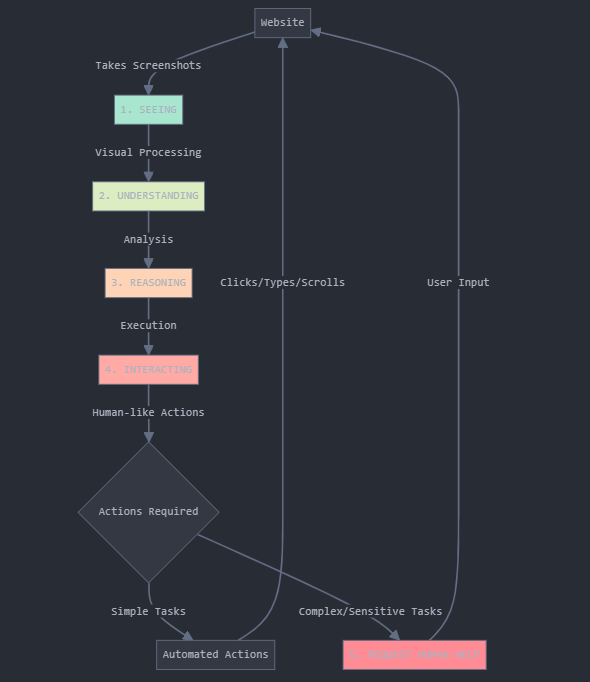
In essence, Operator works by:
- Seeing the web page through screenshots.
- Understanding the task you give it.
- Reasoning about the steps needed to complete the task.
- Interacting with the website like a human, clicking, typing, and scrolling.
- Asking for help when needed and giving you control for sensitive actions.
This combination of vision, reasoning, and action allows Operator to automate a wide range of web-based tasks, making it a powerful tool for increasing productivity and simplifying online interactions.
How to Access OpenAI Operator
Currently in its research preview phase, Operator is available exclusively to ChatGPT Pro users in the United States:
- Who Can Use It: Only U.S.-based Pro subscribers (aged 18 or older) can access Operator.
- Where to Access: Experience Operator directly at operator.chatgpt.com or via integrated sections within the ChatGPT interface.
- Future Expansion: OpenAI plans to broaden Operator’s availability to Plus, Team, and Enterprise users—and eventually offer an API for developers to integrate its capabilities into their own applications.
What Can You Do With Operator?
Operator supports running multiple tasks in parallel. However, to ensure security, it dynamically adjusts the number of simultaneous tasks and open conversations allowed at any given time. These limits may vary, and if you reach one, you’ll receive a notification. For any additional questions, you can contact our support team at help.openai.com.
One practical use case for OpenAI Operator is automating repetitive web tasks that typically require manual interaction. For example:
E-Commerce Automation: Imagine you frequently order groceries online. Instead of manually browsing, selecting items, and checking out each time, you can instruct Operator to navigate your preferred grocery website, fill out the necessary forms, and complete the purchase automatically. This not only saves time but also reduces the potential for human error during repetitive ordering tasks.
Administrative Tasks: In a professional setting, Operator can be set up to handle routine tasks such as filing expense reports or filling out standardized forms. For instance, if your job involves submitting monthly expense reports, Operator can retrieve data, populate the required fields, and even send the completed report to the appropriate recipients.
Travel and Reservation Management: If you often book flights, hotels, or restaurant reservations, Operator can help by automatically navigating booking sites, inputting your details, and finalizing reservations based on your instructions. This use case is particularly beneficial for busy professionals or businesses that require frequent travel arrangements.
Data Gathering and Organization: For research or business analytics, Operator can automate the process of gathering data from multiple websites. It can navigate to specified sources, extract relevant information, and compile it into a structured format for further analysis.
These examples highlight how Operator is designed to free up your time by taking over repetitive, mundane tasks on the web, allowing you to focus on more strategic or creative activities.
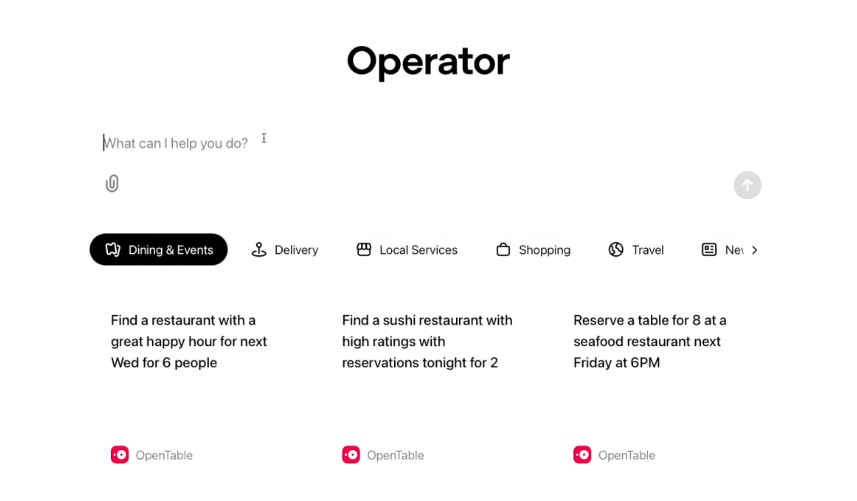
Pricing and Subscription Details
Operator is currently accessible via the ChatGPT Pro subscription, priced at $200 per month in the U.S.:
- Subscription Cost: Access to Operator is bundled with the ChatGPT Pro plan.
- Value for Heavy Users: For busy professionals and tech enthusiasts, this subscription unlocks advanced automation features across the ChatGPT platform.
- Potential for Change: As Operator matures and expands its user base, OpenAI may adjust pricing models—possibly introducing more affordable tiers or broader access options.
Community Perspectives: Is Operator Worth the Price?
Despite its innovative technology, Operator’s steep subscription cost has sparked debate. A review from BGR by Chris Smith noted:
- Brilliance Meets Cost Concerns: While Operator’s ability to autonomously handle web tasks is impressive, its reliance on a $200/month ChatGPT Pro subscription can be a barrier, especially for users who only need occasional automation.
- Limited Scope: The BGR review highlighted that Operator is confined to a browser environment—it cannot perform on-device tasks like managing local files or altering system settings. This limitation means that, for some users, its benefits may not justify the premium price.
- Geographic Restrictions: Currently available only to U.S. users (with no EU support), its accessibility further limits its appeal.
- A Call for More Accessible Options: Critics suggest that a limited free beta or a lower-priced tier would better serve the broader user community while still allowing OpenAI to gather valuable user feedback.
These insights underscore that while Operator represents a major leap in AI-driven automation, its pricing model might need refinement to appeal to a wider audience.
Conclusion
OpenAI Operator represents a significant milestone in the evolution of AI-driven automation. For those already invested in the ChatGPT Pro ecosystem, Operator offers a glimpse into the future of digital productivity. For others, the pricing debate highlights a need for more accessible options as AI agents continue to mature. As OpenAI refines Operator and broadens its access, we can expect even more powerful and cost-effective automation tools to emerge.
Stay tuned for updates from OpenAI and explore how these groundbreaking technologies might soon transform your digital experience.


